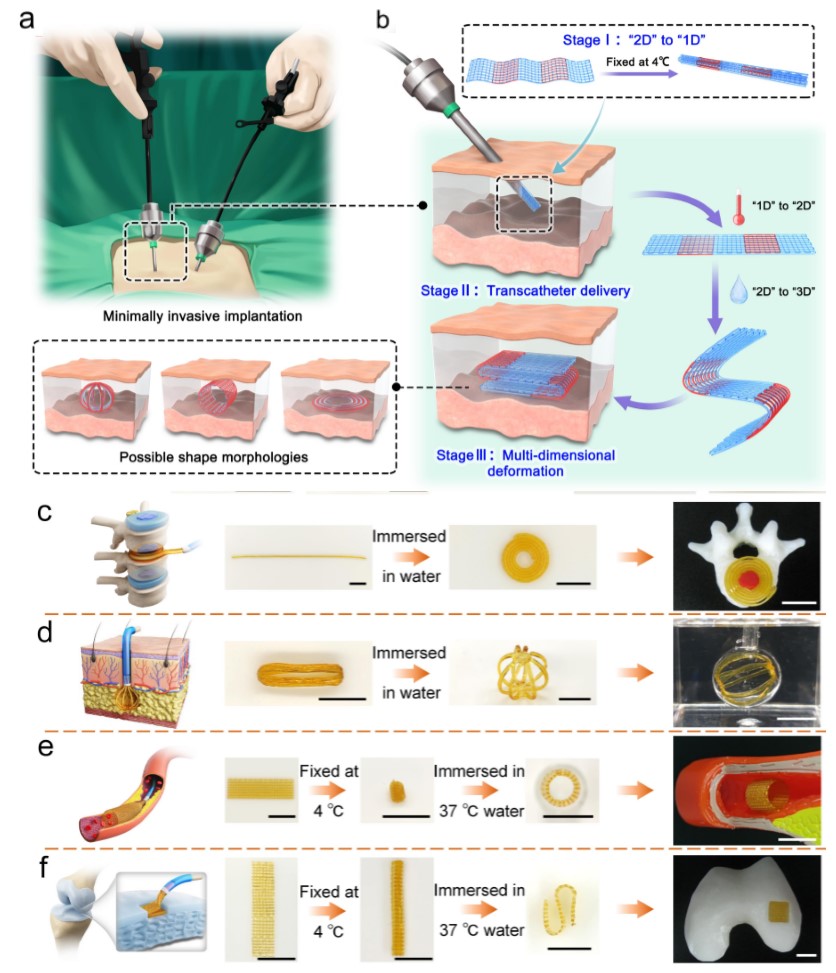Enhanced Minimally Invasive Implantation: 4D Printed Hydrogel Scaffold with Programmable Deformation and Swelling-Stiffening Properties
Date:04-03-2024 | 【Print】 【close】
Recently, researchers from the Shenzhen Institute of Advanced Technology (SIAT) of the Chinese Academy of Sciences have developed an approach to deliver scaffolds in a minimally invasive manner through multidimensional morphing (one-dimensional to three-dimensional) by the development of amphiphilic dynamic thermoset polyurethane (DTPU).
This study was published in Nature Communications on Feb 21.
Three-dimensional (3D) printing is widely used in the biomedical field and has shown promising results in various biomedical applications. However, the insertion of bulky 3D printed scaffolds often entails exposing the operation site to unavoidable injury.
"Given the growing preference for minimally invasive surgery in clinical practice, delivering 3D printed scaffolds in a compact state and allowing them to autonomously morph in vivo to fit the implantation site would be advantageous", said Prof. ZHAO Xiaoli, one of the corresponding authors of this study.
In this study, researchers developed a mechanically tunable and dynamically crosslinked shape memory polyurethane system, which is compatible with extrusion-based multi-material 4D printing to fabricate scaffolds with body temperature-triggered shape memory function, water-triggered programmable deformation, and swelling-stiffening properties.
In vitro and in vivo experiments demonstrated that the two-dimensional (2D) printed structure could be constrained into a one-dimensional (1D) shape for catheter delivery. Once implanted in the body, it transformed pontaneously into the desired 3D shape for cavity filling and mechanical support under the stimulations of body temperature and body fluids while circumventing harmful stimuli.
This study presentes a novel and promising approach for minimally invasive treatment of tissue defects, which shows potential in biomedical applications.

Design of multi-material 4D printing scaffold and potential biomedical applications. (Image by SIAT)
Media Contact:
ZHANG Xiaomin
Email:xm.zhang@siat.ac.cn